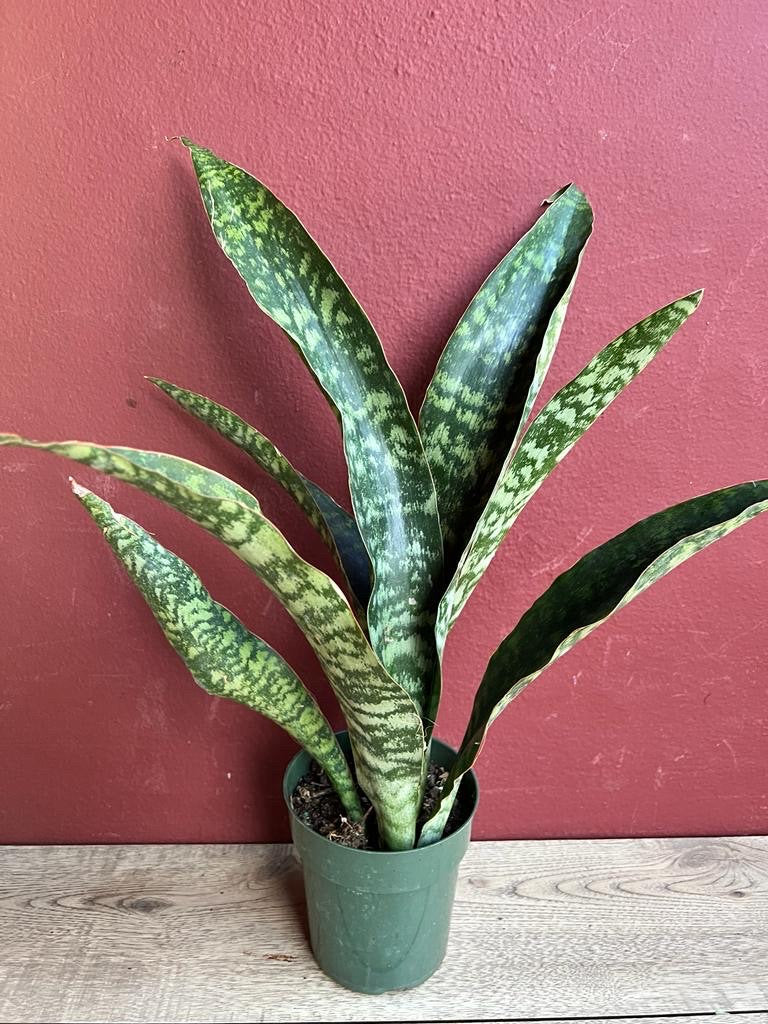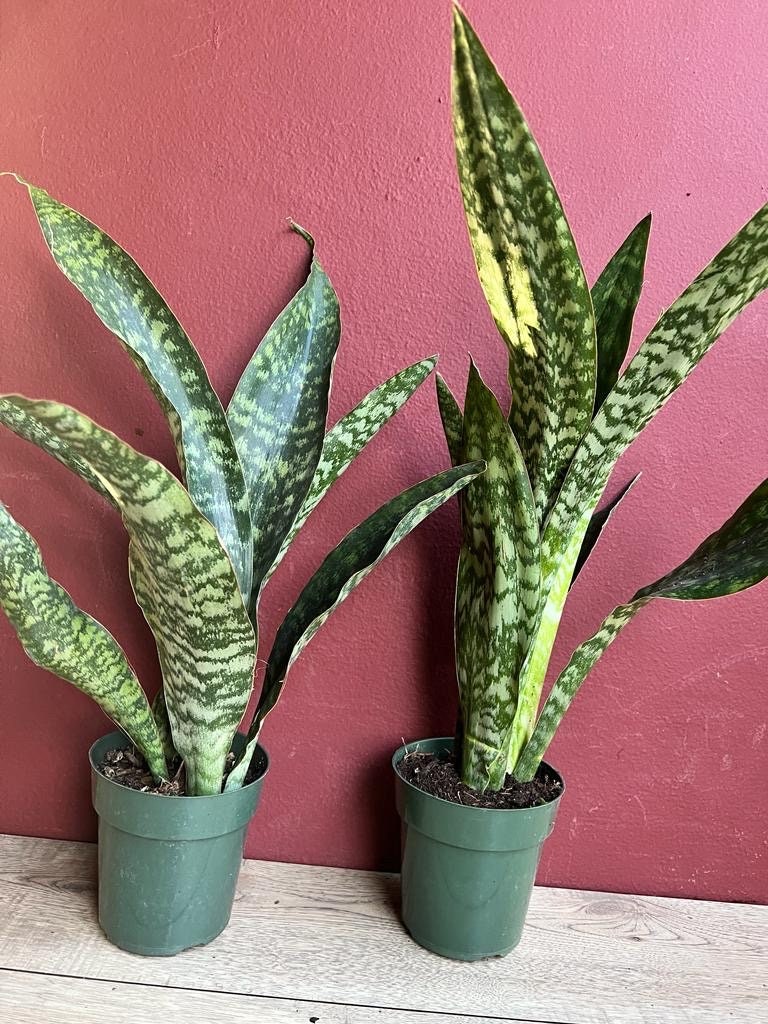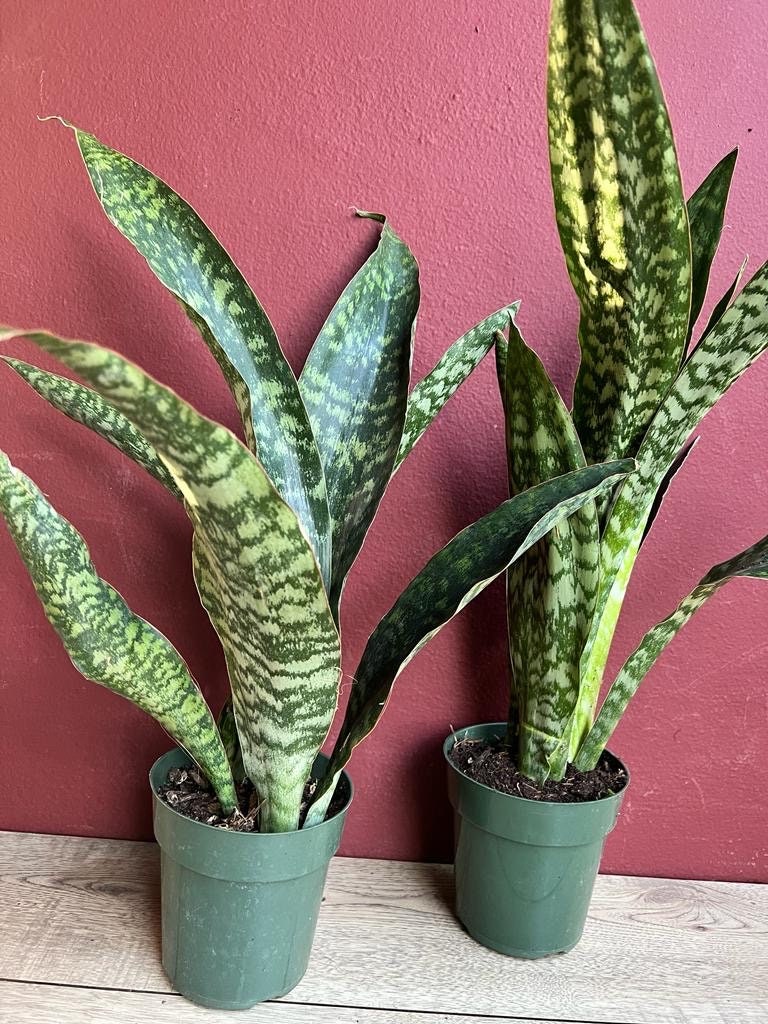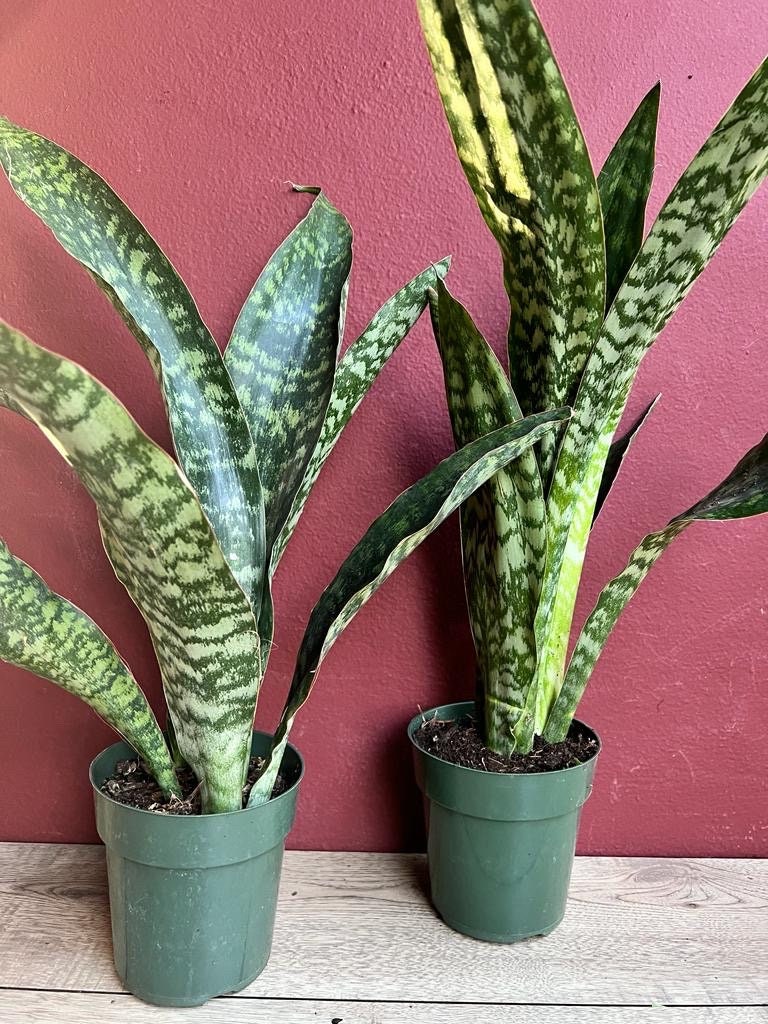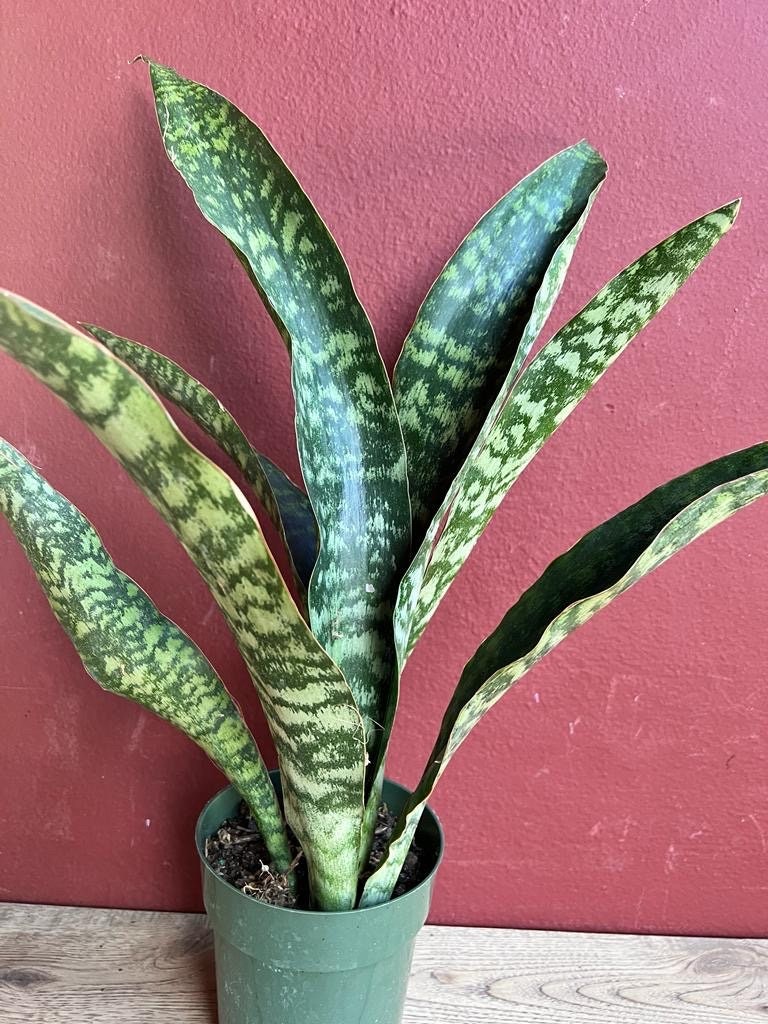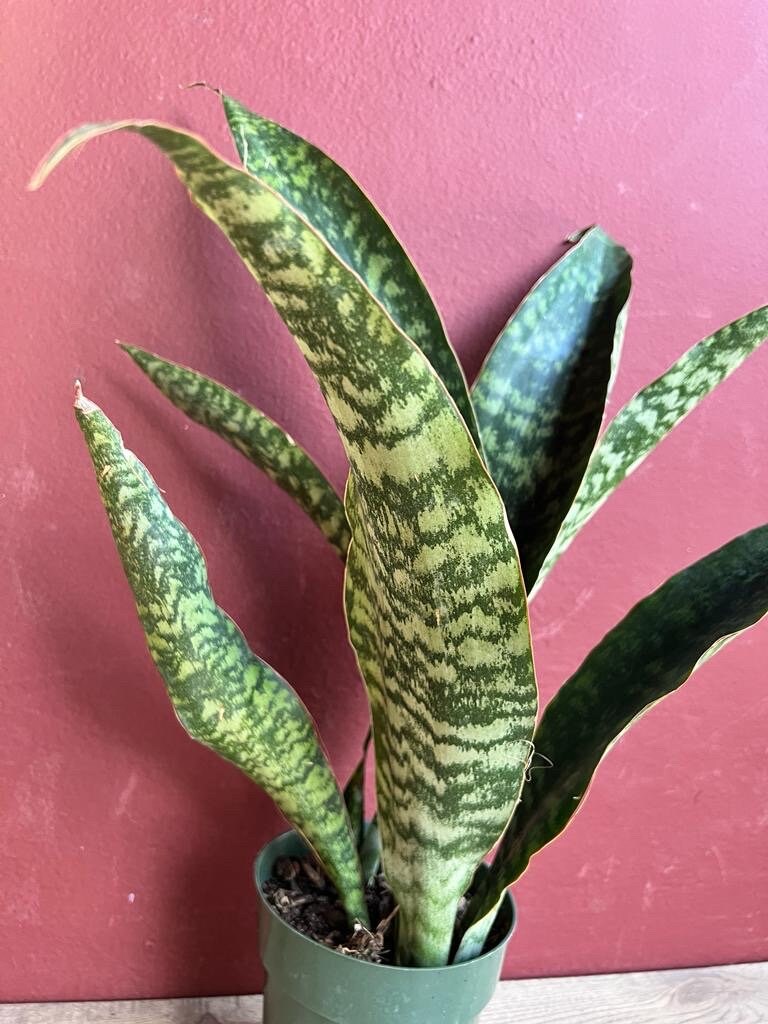Sansevieria Jaboa, in 6" pot, King Jaboa, Dracaena Jaboa
Sansevieria Jaboa, in 6" pot, King Jaboa, Dracaena Jaboa
Couldn't load pickup availability
Note: You will receive Sansevieria Jaboa in 6" pot similar to the pictures.
Sansevieria Jaboa (often called Dracaena Jaboa) is a striking, rare variety of snake plant known for its tall, narrow, rigid leaves with deep green and light green vertical stripes. With its architectural appearance, it’s a standout addition to any indoor space. This low-maintenance plant is ideal for beginners and seasoned plant lovers alike, as it tolerates a range of conditions—from low light to drought. Sansevieria Jaboa is perfect for contemporary, minimalist settings and also offers air-purifying qualities, making it an excellent choice for homes, offices, and other spaces in need of a visually appealing and easy-to-care-for plant.
Care Guide for Sansevieria Jaboa
-
Light Requirements
- Bright, Indirect Light: Sansevieria Jaboa thrives in bright, indirect light but can also tolerate low light, making it suitable for areas with limited natural sunlight. Avoid direct sunlight, as it can scorch the leaves. In lower light conditions, growth may slow down, but the plant remains healthy.
-
Watering
-
Water Sparingly: This drought-tolerant plant needs infrequent watering. Allow the soil to dry out completely between waterings to avoid root rot.
- In the growing season (spring and summer), water every 2-3 weeks.
- In winter (dormancy period), reduce watering to once a month or less.
- Ensure the plant is in well-draining soil, and do not let water sit at the bottom of the pot.
-
Water Sparingly: This drought-tolerant plant needs infrequent watering. Allow the soil to dry out completely between waterings to avoid root rot.
-
Soil Requirements
- Well-Draining Soil: Sansevieria Jaboa prefers a well-draining potting mix. A cactus or succulent mix works well, or you can add perlite or sand to your regular potting soil to increase drainage and prevent water retention around the roots.
-
Temperature
- Warm, Stable Temperatures: This plant thrives in temperatures between 65°F to 85°F (18°C to 29°C). Avoid exposure to temperatures below 50°F (10°C), as cold drafts can harm it.
- Temperature Fluctuations: While it can tolerate some variation in temperature, it should be kept away from extremes, such as direct air conditioning, heating vents, or cold windows.
-
Humidity
- Low to Moderate Humidity: Sansevieria Jaboa is adaptable to low humidity and can thrive in the average humidity levels found in most homes and offices. It doesn’t require additional humidity, but occasional misting or use of a humidifier may be appreciated in very dry conditions.
-
Fertilizing
- Fertilize Sparingly: As a slow grower, Sansevieria Jaboa doesn’t need frequent fertilization. During the growing season (spring and summer), use a balanced, diluted fertilizer every 4-6 weeks.
- No Fertilizing in Winter: During the cooler months when the plant’s growth slows down, stop fertilizing.
-
Repotting
- Repot Every 2-3 Years: This plant grows slowly and typically only requires repotting when it becomes root-bound (roots grow out of the pot). Choose a pot that is 1-2 inches larger than the current one for optimal growth.
- Root Check: When repotting, inspect the roots for any signs of rot (dark or mushy roots) and trim them if necessary to prevent further damage.
-
Pests and Problems
- Pest Resistance: Sansevieria Jaboa is generally pest-resistant but may occasionally attract mealybugs, scale insects, or spider mites. Treat infestations with neem oil, insecticidal soap, or by wiping down leaves with a cotton ball dipped in rubbing alcohol.
- Yellowing Leaves: Yellowing leaves often indicate overwatering. Check the soil moisture and adjust your watering routine to prevent root rot.
-
Propagation
- Leaf Cuttings: Sansevieria Jaboa can be propagated by cutting a healthy leaf into sections (around 4-6 inches long). Let the cut ends callous over for a few days before placing them in well-draining soil or a shallow container of water. Roots should develop within a few weeks.
- Division: If the plant produces multiple pups or offshoots, you can divide them during repotting and plant each pup in its own pot.
-
Maintenance
- Cleaning the Leaves: Wipe down the leaves occasionally with a damp cloth to remove dust and help the plant photosynthesize more effectively.
- Leaf Damage: If the plant develops damaged or yellowing leaves, prune them off. Sansevieria Jaboa doesn’t require heavy pruning but benefits from occasional tidying.
Summary of Care Needs:
- Light: Prefers bright, indirect light but can tolerate low light.
- Watering: Water sparingly, allowing the soil to dry out completely between waterings. Reduce watering in winter.
- Soil: Requires well-draining soil, such as a cactus or succulent mix.
- Temperature: Thrives in temperatures between 65°F to 85°F (18°C to 29°C). Avoid cold drafts.
- Humidity: Adapts to low to moderate humidity.
- Fertilizing: Feed with diluted balanced fertilizer in the growing season (every 4-6 weeks). No fertilizing in winter.
- Repotting: Repot every 2-3 years or when root-bound.
Share
